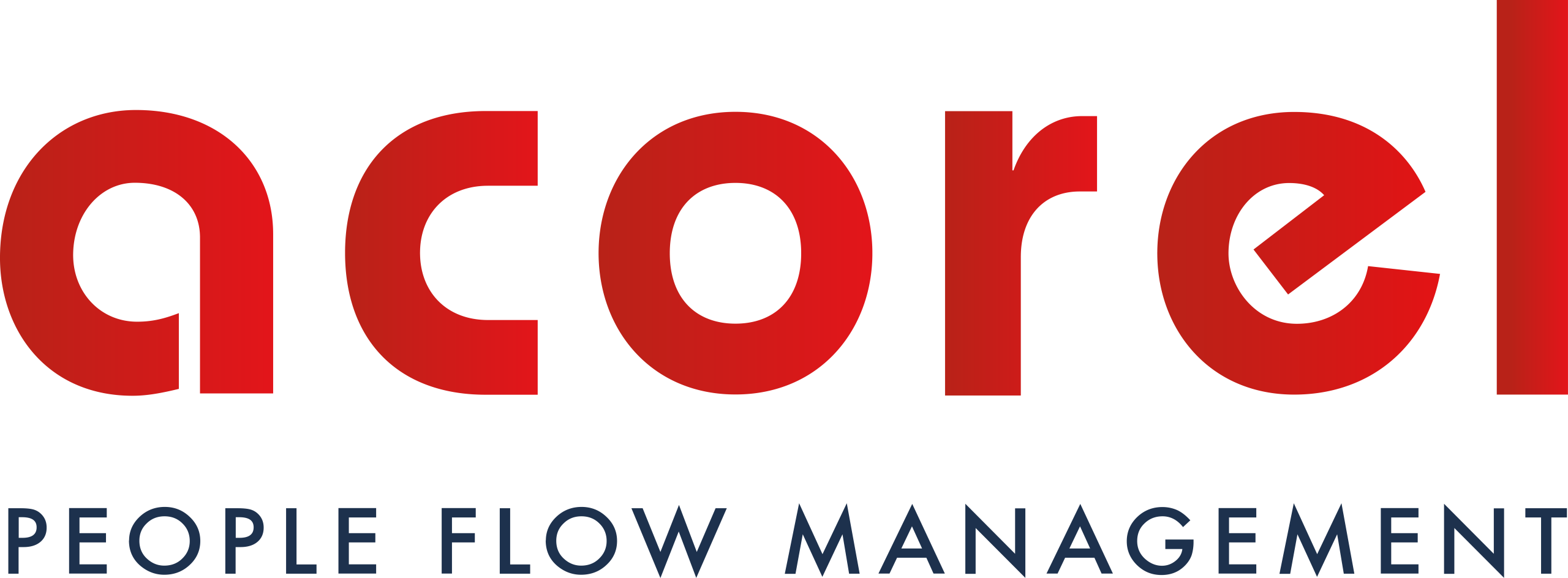The effective management of passenger flows is crucial to ensuring a smooth and safe travel experience on rail transport systems. As demand for rail transport continues to grow in a market that is opening up to competition, managers are faced with the challenge of maintaining a smooth flow of passengers while prioritising their safety.
The importance of passenger flow management and safety
Effective passenger flow management plays an essential role in improving the overall passenger experience. It involves the coordination of several elements, including ticketing, boarding, on-board navigation and disembarkation. When effective, it can reduce crowds, minimise delays and improve overall system capacity. In addition, well-managed passenger flows help to improve safety measures by preventing overcrowding and ensuring adequate evacuation procedures in the event of an emergency.
Safety issues in rail transport
Platform congestion:
Platform congestion is a major safety issue, as it increases the risk of accidents, falls and injuries to passengers. Large crowds rushing to board trains can lead to overcrowding, jostling and potential falls on the platforms. In addition, crowded platforms can impede the flow of emergency services in critical situations.
Safety on board:
Passenger safety once on board is paramount. Problems such as lack of adequate seating, inadequate emergency exits and insufficient emergency communication systems can have a significant impact on passenger safety. Inadequate safety measures can hamper evacuation efforts in the event of an emergency, resulting in injury or loss of life.
Crowd management systems:
Implementing crowd management systems can help to regulate passenger flows and minimise congestion on platforms. To achieve this, strategies such as clear signage, designated waiting areas and staff trained in crowd control techniques can be implemented. In addition, real-time monitoring of passenger density can enable operators to anticipate potential congestion points and take proactive measures.
Improved on-board safety features: Rail operators should invest in improved on-board safety features, including ergonomic seating, visible emergency exit signs and effective emergency communication systems. Regular safety inspections and maintenance checks should be carried out to ensure that safety devices are in good working order.
Technological solutions: The use of advanced technologies can make a significant contribution to passenger flow management and safety. Intelligent surveillance systems, real-time passenger information and automated passenger counting can help operators monitor passenger flows, identify potential risks and optimise operations.

Automatic people counting systems help with flow management and safety
Automatic passenger counting systems play a crucial role in enhancing safety in rail transport. By accurately tracking the number of passengers on board, these systems provide several safety benefits:
Preventing Overcrowding:
Automatic passenger counting systems help rail operators monitor passenger load in real-time. This information allows them to identify and prevent situations of overcrowding. Overcrowded trains can pose safety risks, including difficulties in evacuating passengers during emergencies and increased chances of accidents or incidents due to limited space.
Ensuring Emergency Preparedness:
In the event of an emergency or evacuation, knowing the exact number of passengers on board is vital for emergency responders and railway staff. Automatic passenger counting systems provide real-time data on passenger counts, enabling authorities to respond promptly and allocate necessary resources accordingly.

Balancing Train Loading:
An accurate count of passengers allows rail operators to distribute the load evenly across the train. This balancing of weight enhances safety by preventing overloading on specific compartments or cars, which could lead to stability issues or excessive strain on the infrastructure
Optimizing Platform Safety:
Automatic passenger counting systems help rail operators manage platform safety effectively. By analyzing passenger flow and count data, operators can identify peak times, allocate staff resources, and implement crowd management strategies to ensure safe boarding and alighting of passengers.
Enhancing Security Measures:
Accurate passenger counting aids in enhancing security measures in rail transport. By monitoring passenger numbers, authorities can identify any significant deviations from normal patterns, such as abandoned bags or suspicious behavior. This information helps security personnel respond promptly to potential threats and maintain a secure environment for passengers.
Planning and Decision Making:
Data collected from automatic passenger counting systems enables rail operators to analyze passenger trends, such as peak travel times, popular routes, and passenger distribution across different train services. This information assists in making informed decisions about capacity planning, scheduling, and infrastructure improvements, ultimately contributing to safer and more efficient rail operations.
For more information, click here
